Advertisements
Chapters
![NCERT solutions for Mathematics [English] Class 6 chapter 13 - Symmetry NCERT solutions for Mathematics [English] Class 6 chapter 13 - Symmetry - Shaalaa.com](/images/mathematics-english-class-6_6:0797baf62bd6489d8c888098e76ae949.jpg)
Advertisements
Solutions for Chapter 13: Symmetry
Below listed, you can find solutions for Chapter 13 of CBSE NCERT for Mathematics [English] Class 6.
NCERT solutions for Mathematics [English] Class 6 13 Symmetry EXERCISE 13.1 [Pages 263 - 264]
List any four symmetrical objects from your home or school.
For the given figure, which one is the mirror line, l1 or l2?
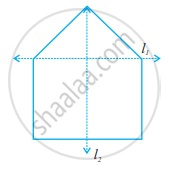
Identify the shape given below. Check whether they are symmetric or not. Draw the line of symmetry as well.

Identify the shape given below. Check whether they are symmetric or not. Draw the line of symmetry as well.
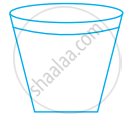
Identify the shape given below. Check whether they are symmetric or not. Draw the line of symmetry as well.
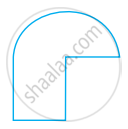
Identify the shape given below. Check whether they are symmetric or not. Draw the line of symmetry as well.
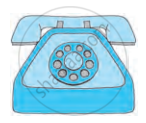
Identify the shape given below. Check whether they are symmetric or not. Draw the line of symmetry as well.
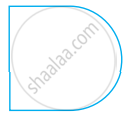
Identify the shape given below. Check whether they are symmetric or not. Draw the line of symmetry as well.
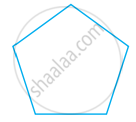
Copy the following on a squared paper. A square paper is what you would have used in your arithmetic notebook in earlier classes. Then complete them such that the dotted line is the line of symmetry.
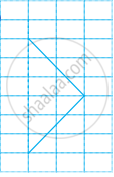
Copy the following on a squared paper. A square paper is what you would have used in your arithmetic notebook in earlier classes. Then complete them such that the dotted line is the line of symmetry.

Copy the following on a squared paper. A square paper is what you would have used in your arithmetic notebook in earlier classes. Then complete them such that the dotted line is the line of symmetry.

Copy the following on a squared paper. A square paper is what you would have used in your arithmetic notebook in earlier classes. Then complete them such that the dotted line is the line of symmetry.
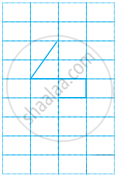
Copy the following on a squared paper. A square paper is what you would have used in your arithmetic notebook in earlier classes. Then complete them such that the dotted line is the line of symmetry.

Copy the following on a squared paper. A square paper is what you would have used in your arithmetic notebook in earlier classes. Then complete them such that the dotted line is the line of symmetry.
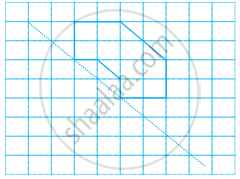
In the figure, l is the line of symmetry. Complete the diagram to make it symmetric.
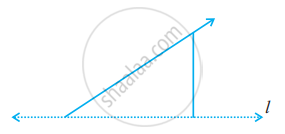
In the figure, l is the line of symmetry. Draw the image of the triangle and complete the diagram so that it becomes symmetric.
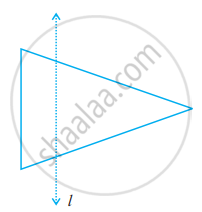
NCERT solutions for Mathematics [English] Class 6 13 Symmetry EXERCISE 13.2 [Pages 267 - 269]
Find the number of lines of symmetry for the following shape:

Find the number of lines of symmetry for the following shape:
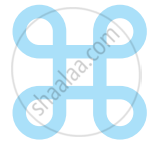
Find the number of lines of symmetry for the following shape:

Find the number of lines of symmetry for the following shape:
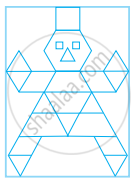
Find the number of lines of symmetry for the following shape:
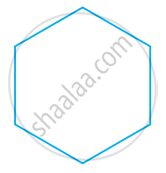
Find the number of lines of symmetry for the following shape:
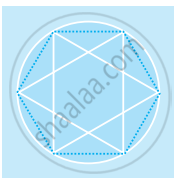
Find the number of lines of symmetry for the following shape:

Find the number of lines of symmetry for the following shape:
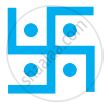
Find the number of lines of symmetry for the following shape:
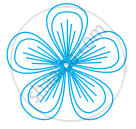
Copy the triangle in the following figure on squared paper. Draw the line(s) of symmetry, if any and identify the type of triangle. (Some of you may like to trace the figure and try paper-folding first!)
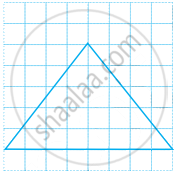
Copy the triangle in the following figure on squared paper. Draw the line(s) of symmetry, if any and identify the type of triangle. (Some of you may like to trace the figure and try paper-folding first!)
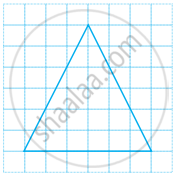
Copy the triangle in the following figure on squared paper. Draw the line(s) of symmetry, if any and identify the type of triangle. (Some of you may like to trace the figure and try paper-folding first!)

Copy the triangle in the following figure on squared paper. Draw the line(s) of symmetry, if any and identify the type of triangle. (Some of you may like to trace the figure and try paper-folding first!)
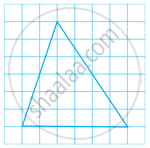
Complete the following table.
|
Shape |
Rough figure |
Number of lines of symmetry |
|
Equilateral triangle |
|
3 |
|
Square |
______ |
______ |
|
Rectangle |
______ |
______ |
|
Isosceles triangle |
______ |
______ |
|
Rhombus |
______ |
______ |
|
Circle |
______ |
______ |
Can you draw a triangle which has exactly one line of symmetry?
Can you draw a triangle which has exactly two lines of symmetry?
Can you draw a triangle which has exactly three lines of symmetry?
Can you draw a triangle which has no lines of symmetry?
On a squared paper, sketch the following:
A triangle with a horizontal line of symmetry but no vertical line of symmetry.
On a squared paper, sketch the following:
A quadrilateral with both horizontal and vertical lines of symmetry.
On a squared paper, sketch the following:
A quadrilateral with a horizontal line of symmetry but no vertical line of symmetry.
On a squared paper, sketch the following:
A hexagon with exactly two lines of symmetry.
On a squared paper, sketch the following:
A hexagon with six lines of symmetry.
Trace the figure and draw the lines of symmetry, if any:

Trace the figure and draw the lines of symmetry, if any:
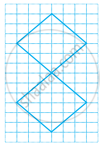
Trace the figure and draw the lines of symmetry, if any:
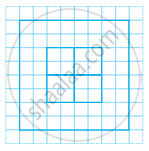
Trace the figure and draw the lines of symmetry, if any:
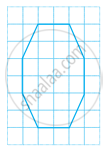
Trace the figure and draw the lines of symmetry, if any:
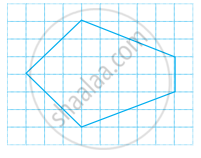
Trace the figure and draw the lines of symmetry, if any:

Consider the letters of English alphabets, A to Z. List among them the letters which have vertical lines of symmetry (like A).
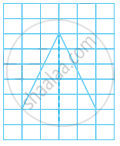
Consider the letters of English alphabets, A to Z. List among them the letters which have horizontal lines of symmetry (like B).
Consider the letters of English alphabets, A to Z. List among them the letters which have no lines of symmetry (like Q)
Given here are figures of a few folded sheets and designs drawn about the fold. In each case, draw a rough diagram of the complete figure that would be seen when the design is cut off.
 |
 |
NCERT solutions for Mathematics [English] Class 6 13 Symmetry EXERCISE 13.3 [Pages 271 - 272]
Find the number of lines of symmetry in the following shapes. How will you check your answers?
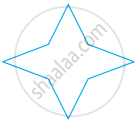
Find the number of lines of symmetry in the following shapes. How will you check your answers?

Find the number of lines of symmetry in the following shapes. How will you check your answers?

Find the number of lines of symmetry in the following shapes. How will you check your answers?

Find the number of lines of symmetry in the following shapes. How will you check your answers?

Find the number of lines of symmetry in the following shapes. How will you check your answers?

Copy the following drawing on squared paper. Complete such that the resulting figure has two dotted lines as two lines of symmetry.
How did you go about completing the picture?
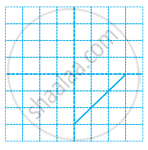
Copy the following drawing on squared paper. Complete such that the resulting figure has two dotted lines as two lines of symmetry.
How did you go about completing the picture?
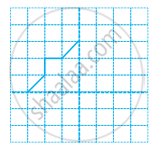
Copy the following drawing on squared paper. Complete such that the resulting figure has two dotted lines as two lines of symmetry.
How did you go about completing the picture?
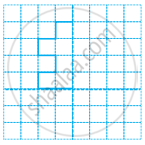
Copy the following drawing on squared paper. Complete such that the resulting figure has two dotted lines as two lines of symmetry.
How did you go about completing the picture?

Copy the following drawing on squared paper. Complete such that the resulting figure has two dotted lines as two lines of symmetry.
How did you go about completing the picture?

Copy the following drawing on squared paper. Complete such that the resulting figure has two dotted lines as two lines of symmetry.
How did you go about completing the picture?
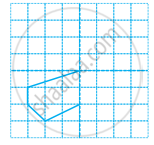
In each figure alongside, a letter of the alphabet is shown along with a vertical line. Take the mirror image of the letter in the given line. Find which letters look the same after reflection (i.e. which letters look the same in the image) and which do not. Can you guess why?
 |
 |
Try for O E M N P H L T S V X
Solutions for 13: Symmetry
![NCERT solutions for Mathematics [English] Class 6 chapter 13 - Symmetry NCERT solutions for Mathematics [English] Class 6 chapter 13 - Symmetry - Shaalaa.com](/images/mathematics-english-class-6_6:0797baf62bd6489d8c888098e76ae949.jpg)
NCERT solutions for Mathematics [English] Class 6 chapter 13 - Symmetry
Shaalaa.com has the CBSE Mathematics Mathematics [English] Class 6 CBSE solutions in a manner that help students grasp basic concepts better and faster. The detailed, step-by-step solutions will help you understand the concepts better and clarify any confusion. NCERT solutions for Mathematics Mathematics [English] Class 6 CBSE 13 (Symmetry) include all questions with answers and detailed explanations. This will clear students' doubts about questions and improve their application skills while preparing for board exams.
Further, we at Shaalaa.com provide such solutions so students can prepare for written exams. NCERT textbook solutions can be a core help for self-study and provide excellent self-help guidance for students.
Concepts covered in Mathematics [English] Class 6 chapter 13 Symmetry are Concept of Symmetry, Making Symmetric Figures: Ink-blot Devils, Concept of Lines Symmetry, Concept of Reflection Symmetry.
Using NCERT Mathematics [English] Class 6 solutions Symmetry exercise by students is an easy way to prepare for the exams, as they involve solutions arranged chapter-wise and also page-wise. The questions involved in NCERT Solutions are essential questions that can be asked in the final exam. Maximum CBSE Mathematics [English] Class 6 students prefer NCERT Textbook Solutions to score more in exams.
Get the free view of Chapter 13, Symmetry Mathematics [English] Class 6 additional questions for Mathematics Mathematics [English] Class 6 CBSE, and you can use Shaalaa.com to keep it handy for your exam preparation.

